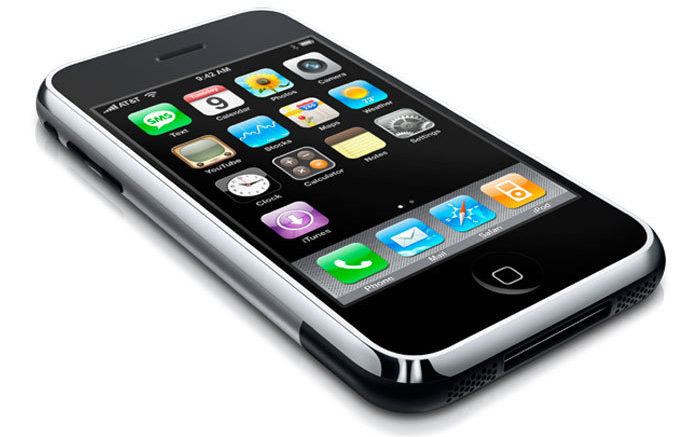Although I’ve yet to see one in person, The Samsung Galaxy S8 is the most fulfilled expression to date of Steve Jobs’ original vision. Mr. Jobs believed that the devices needed to “disappear” behind the content it displayed and with its edge-to-edge-to-edge-to-edge glass, the S8 certainly does that.
So why am I bored with it?
Apple’s iPhone 8 promises to be even more glassy, even more disappearing, if that’s possible. So why haven’t I and the rest of the faithful started to drool? It seems that after some rapid evolution in the first decade of the 2000s, the smartphone idiom has become well established. A large, glassy display up front with a slender body and a minimum of ornamentation. That’s a smartphone. For the most part they’re nearly identical; Apple’s retained the round home button to distinguish its phones but that’s barely a brand distinction and certainly a waste of space. The smartphone as we know it seems to have stalled in its design and capabilities.
Is that because there’s nothing more you can do with one? I doubt that. While I personally couldn’t imagine another use for the eminently helpful little device, smarter minds than mine must be on the task now, dreaming up the next must-have device to jumpstart the next generation of sales. No, I think we’ve reached a sort of natural zenith for the smartphone, driven by some real life limitations.
First of all, a phone can only get so big and not be a nuisance. 6 – 7 inches diagonally seems to be the top end and let’s be honest, that’s a gigantic phone. You need to put that in a bag, not in your pocket. You may want a bigger screen than that but you don’t want to carry one.
Second, battery life continues to be an issue. There are only so many tricks you can do with processor power consumption before you realize that the energy density of the battery is just not going to improve. At the very minimum, a phone has to last one day before charging. Really it would be nice if it lasted a week but one thing at a time.
Third, although Americans are slowly moving out of the expensive habit of “free phones” into subsidized purchases or simply paying full price, a phone is a pricey little bit of kit. Best case scenario the one you want is $600 and that’s a lot to spend, let’s not say it isn’t. Resale values on phones are climbing as people learn how to take care of them and product cycles get longer, but a tech-savvy user will spend $1,000 a year on phones net of resales, every year.
Something has to change.
For a while it looked like glasses were the answer. After all, with a pair of glasses equipped with a built-in display, you can have an image virtually as large as you want without carrying it around. That seems like a great idea, but the backlash from Google Glass seems to have put it all on hold. Still, if we are to believe shows like Black Mirror, some sort of augmented reality device, whether glasses or fancy contacts, is the future.
There was a short flirtation with the idea of a foldable display, but after seeing a few prototypes, it seems that it’s harder to get there than we thought. Perhaps one day we’ll all walk around with little unfolding computers like they do in WestWorld but that too seems a long way off.
And of course there’s the idea of pure brain implants but personally I’m glad that’s a long, long way off. I’m just not ready to concern myself with that right now. Supposedly Facebook is working on some sort of non-surgical ways to do this but it’s just too invasive, I just can’t imagine wanting that.
So we’re left with the big problem, which really ends up being the battery. Take the battery out of a phone and you eliminate over half its weight and much of its bulk. A battery-less phone could be truly transparent in most areas and take many different forms much more easily. But of course, power must come from somewhere. If computing became efficient enough and display technology could be tamed, it might somehow be possible to power a phone with solar energy or with kinetic energy. (Yeah, imagine those excuses: “Uh, I’ll be right back, I need to walk around the block, my phone’s almost dead.”) Denser batteries aren’t really the answer; clearly the answer is generating the power you need on demand, and I don’t know how you would do that.
One thing is for sure, until someone figures this out, phones are all going to look pretty much identical. That’s not so terrible since they’re all pretty good, but it won’t stop me from thinking about a future full of the “next big thing.”





